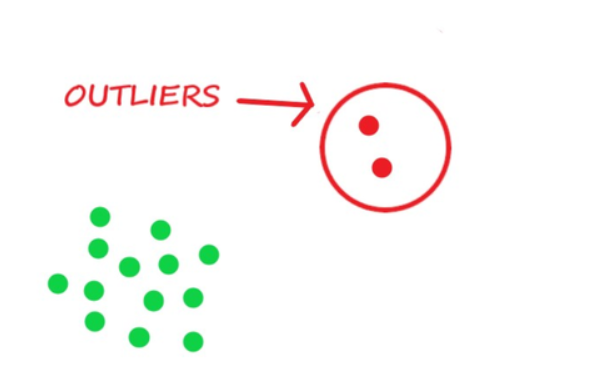Question a: Is the span of \(\phi\) is \(\phi\) ? justify. The vectors \(u_1 = ( 2, -3 , 1) , u_2 = (1 , 4 , -2) , u_3 = (-8 , 12 , -4) , u_4 = ( 1 , 37 , -17) , u_5 = (-3 , -5 , 8)\) generate \(R^3\) . Find a subset of the set \([u_1, u_2, u_3, u_4, u_5]\).
Solution:
First part:
NO, it is the trivial vector space that includes only the zero vector.
Second part:
The vectors \(u_1 = ( 2, -3 , 1) , u_2 = (1 , 4 , -2), u_3 = (-8 , 12 , -4) , u_4 = ( 1 , 37 , -17) , u_5 = (-3, -5, 8)\) generate \(R^3\) . To find the subset we have to search the linearly dependent set from \([u_1, u_2, u_3, u_4, u_5]\).
Let \(a_1, a_2, a_3, a_4, a_5 \in R\).
Then the linear combination is
\(a_1u_1 + a_2u_2 + a_3u_3 + a_4u_4 + a_5u_5 = 0\)
\(a_1\left[\begin{array}{cc} 2\\-3\\1 \end{array}\right] + a_2 \left[\begin{array}{cc} 1\\4\\-2 \end{array}\right] +a_3\left[\begin{array}{cc} -8\\12\\-4 \end{array}\right] +a_4\left[\begin{array}{cc} 1\\37\\-17 \end{array}\right] + a_5\left[\begin{array}{cc} -3\\5\\8 \end{array}\right] = \left[\begin{array}{cc} 0\\0\\0 \end{array}\right]\)
The augmented matrix is,
\(\left[\begin{array}{cc} 2&1&-8&1&-3|0\\-3&4&12&37&5|0\\1&-2&-4&-17&8|0 \end{array}\right]\)
\(\left[\begin{array}{cc} 2&\frac{1}{2} & -4 & \frac{1}{2} & \frac{-3}{2}|0\\ -3 & 4 & 12 & 37 & 5|0\\ 1 & -2 & -4 & -17 & 8|0 \end{array}\right]\) \(\frac{1}{2}R_1 \Rightarrow R_2\)
\(\left[\begin{array}{cc} 1 & \frac{1}{2} & -4 & \frac{1}{2} & \frac{-3}{2}|0\\ 0 & \frac{11}{2} & 0 & \frac{77}{2} & \frac{-19}{2}|0\\ 0 & -\frac{-5}{2} & 8 & \frac{-35}{2} & \frac{19}{2}|0 \end{array}\right]\) \(R_2 \Leftarrow R_2 +3R_1\) , \(R_3 \Leftarrow R_3 -3 R_1\)
\(\left[\begin{array}{cc} 1 & \frac{1}{2} & -4 & \frac{1}{2} & \frac{-3}{2}|0\\ 0 & 1 & 0 & 7 & -209|0\\ 0 & -\frac{-5}{2} & 8 & \frac{-35}{2} &\frac{19}{2}|0 \end{array}\right]\) \(R_2 \Leftarrow \frac{2}{11}R_2\)
\(\left[\begin{array}{cc} 1 & \frac{1}{2} & -4 & \frac{1}{2} & \frac{-3}{2}|0\\ 0 & 1 & 0 & 7 & -209|0\\ 0 & 0 & 8 & 0 & -513|0 \end{array}\right]\) \(R_3 \Leftarrow R_3 +\frac{5}{2} R_2\)
\(\left[\begin{array}{cc} 1 & 0 & -4 & -3 & 103|0\\ 0 & 1 & 0 & 7 &-209|0\\ 0 & 0 & 8 & 0 & -513|0 \end{array}\right]\) \(R_1 \Leftarrow R_1 -\frac{1}{2}R_2\)
\(\left[\begin{array}{cc} 1 & 0 & -4 & -3 & 103|0\\ 0 & 1 & 0 & 7 & -209|0\\ 0 & 0 & 1 & 0 & \frac{-513}{8}|0 \end{array}\right]\) \(R_3 \Leftarrow \frac{1}{8}R_3\)
\(\left[\begin{array}{cc} 1 & 0 & 0 & -3 & \frac{-307}{2}|0\\ 0 & 1 & 0 & 7 & -209|0\\ 0 & 0 & 1 & 0 &\frac{-513}{8}|0 \end{array}\right]\) R_1 \Leftarrow R_1 + 4R_3 $$
Which shows that the subset of the set \([u_1, u_2, u_3, u_4, u_5]\) that is basis for \(R^3\) are \([u_1, u_2, U_3]\)
Question b: Does every vector space have finite basis? Justify. Prove that the set of solutions to the system of linear equations 2x – y + z = 0, 3x – 2y + Z = 0 is a subspace of \(R^3\). Find the basis for this \(R^3\).
Solution:\
First part
Every vector space have finite basis is false. The space c[0 , 1] or the space of all
Polynomials has no finite basis, only infinite one.
Second part
To prove the set of linear equations \(2x – y + z = 0 \\ 3x – 2y + z = 0\) is a subspace of \(R^3\).
Now
Let us denote the solution set by S
Where \(S = [a(1, 1, -1) : a \in R]\)
\(= [(a, a, -a): a \in R]\) is the solutions set
of equations \(2x – y + z = 0 3x – 2y + z = 0\).
Now
We show S is the subspace of \(R^3\). Clearly S is subspace of \(R^3\).
\(V_{ss1}\) : Clearly \(\vec{o}\) = \((0, 0, 0) \in R^3\) is a zero vector of \(R^3\) .Now we have to show 0 is zero vector of S.
let \(\vec{o} = (d, d, -d) \in s\)
such that
\(u + 0 = u\) \(\forall u \in s\)
Where \(u = (a , a ,-a)\)
\((a , a , -a) +(d , d , -d)\) = \((a , a , -a)\) \(\Rightarrow (d, d,-d) = 0\) .
Hence \(\vec{o}\) = \((0, 0, 0)\) is solutions to the equcation.
Hence \(\vec{o}\) = \((0, 0, 0) \in S\)
\(V_{ss2}\) : Let \(u = (a , a , -a)\) and \(v = (b, b, -b)\) where \(a, b \in R\) and \(u , v \in S\)
Then \(u + v = (a , a ,-a) + (b , b , -b)\)
\(= (a + b , a + b , -a - b)\)
\(=(c , c , -c)\)
where \(c = a + b\) and \(c \in R\). Hence \(u + v \in S\)
\(V_{ss3}\) :Let \(u = (a , a , -a)\) and \(k \in F\)
Such that
\(ku = k(a, a , -a)\)
\(= (ka , kb , -kc)\in S\). Hence set of solution to the given equations is subspace.
\(2x – y + z = 0\)
\(3x – 2y + Z = 0\)
By solving we get \(x = z , z = -y\). Let \(x = s , y = s , z = -s\)
we have the solution would be \([ ( s , s , - s) = s ( 1 , 1 , -1) : s \in R ]\) and basis would be \((1, 1, -1)\).



Comments